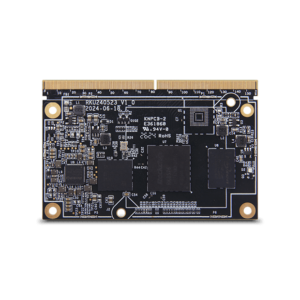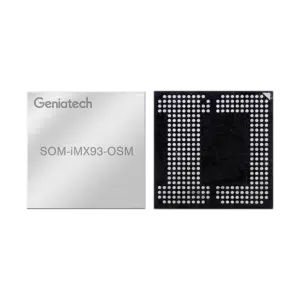Understanding System on Module (SoM) and Its Applications in Embedded Systems
Understanding System on Module (SoM) and Its Applications in Embedded Systems
Blog Article
The rapid progress of technology has pushed substantial inventions in embedded techniques, among that is the computer on module Working as a link between custom electronics and off-the-shelf adventures, the SoM is redefining how developers strategy stuck program design. That website highlights the fundamental comprehension of a System on Module and its rising purposes in several industries.

What is a Process on Module (SoM)?
A System on Component (SoM) is really a compact, ready-to-use panel that integrates all the key the different parts of a method on a single module. That typically includes the processor, memory, power management units, and sometimes extra peripherals like Wi-Fi or Ethernet. Unlike a normal single-board pc, an SoM does not include connectors and software locations pre-installed, meaning it should be coupled with a company panel to make a complete system.
Built to improve development workflows, the modular character of an SoM enables developers to miss out the complex means of designing and assembling every person component from scratch. By adopting an SoM, companies can concentrate more on the application-specific characteristics of the products.
Advantages of Applying Process on Element
The integration of a whole program on a singular module presents a few benefits. First, it drastically reduces the time necessary for solution development. Pre-tested adventures guarantee balance, keeping months of work for executive teams.
Also, the scalability of an SoM enables companies to regulate efficiency levels predicated on project requirements. Like, a low-cost option can easily degree into a high-end solution by replacing the processor in the element while keeping the copyright table design. This approach decreases engineering dangers while selling long-term cost-efficiency.
Finally, the reliability of an off-the-shelf module assures large compatibility with active instruments and frameworks, which makes it perfect for both little startups and big enterprises seeking to hit the industry quickly.
Key Purposes of SoM in Stuck Techniques
The use of Program on Modules spans a few high-demand industries including but not restricted to medical devices, automation, and client electronics.
Medical Units
Precision and consistency are paramount in healthcare. Process on Modules with secure handling abilities are stuck in screens, imaging units, and portable diagnostic tools.
Commercial Automation
Effective and energy-efficient, an SoM is a must for industrial get a handle on systems and autonomous robotics. Its scalable architecture helps high-speed knowledge control and IoT connectivity.
IoT Products

Client services and products like clever thermostats, wearable units, and even house personnel integrate an ultra-compact Program on Module for smooth performance.
The Process on Element remains to gain traction because decreased complexity and flexibility, cementing it self as a future-proof alternative in the embedded methods sphere. Market leaders are already leveraging these segments, and their range is expected to increase even more as technology evolves.
Report this page